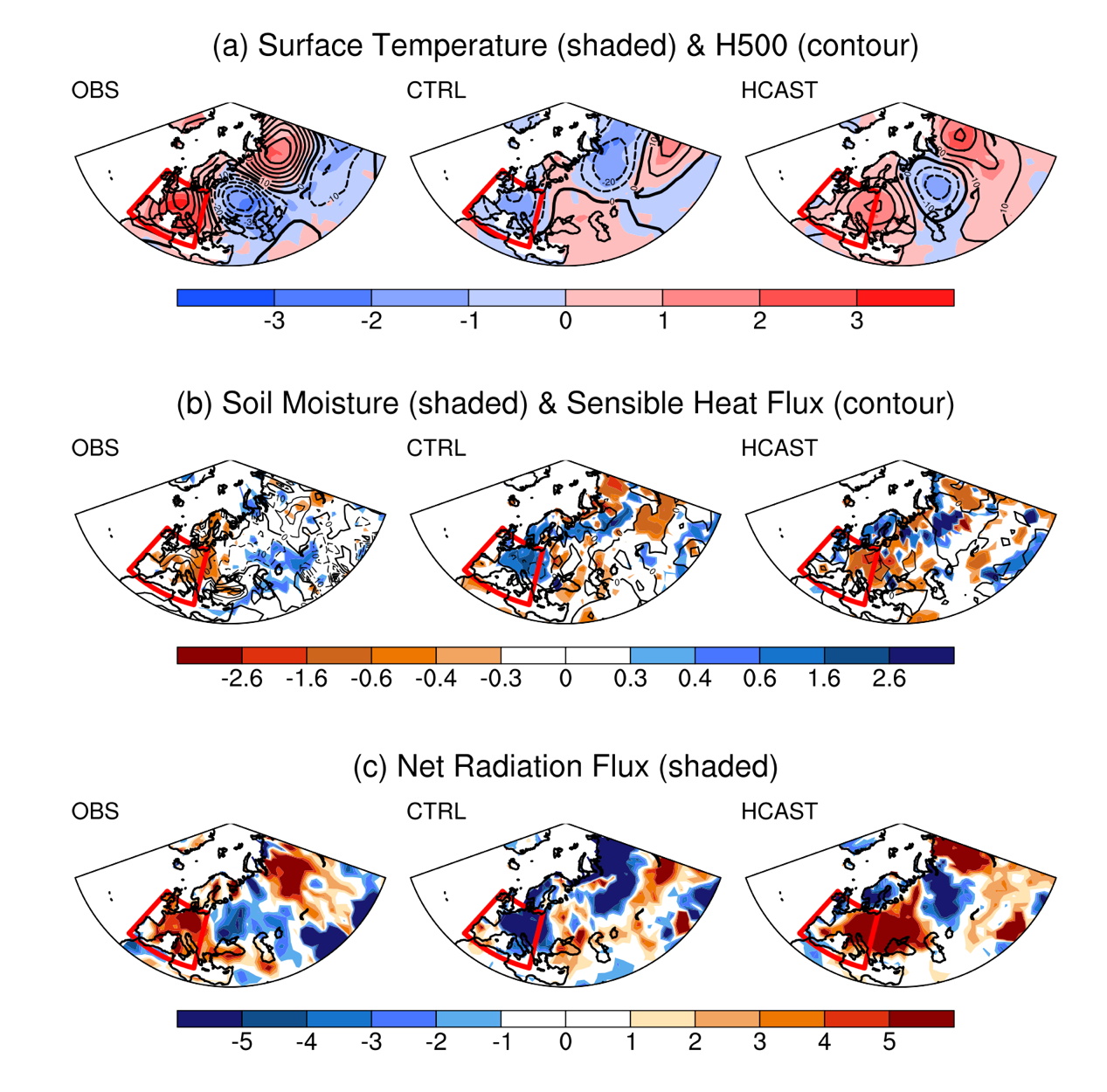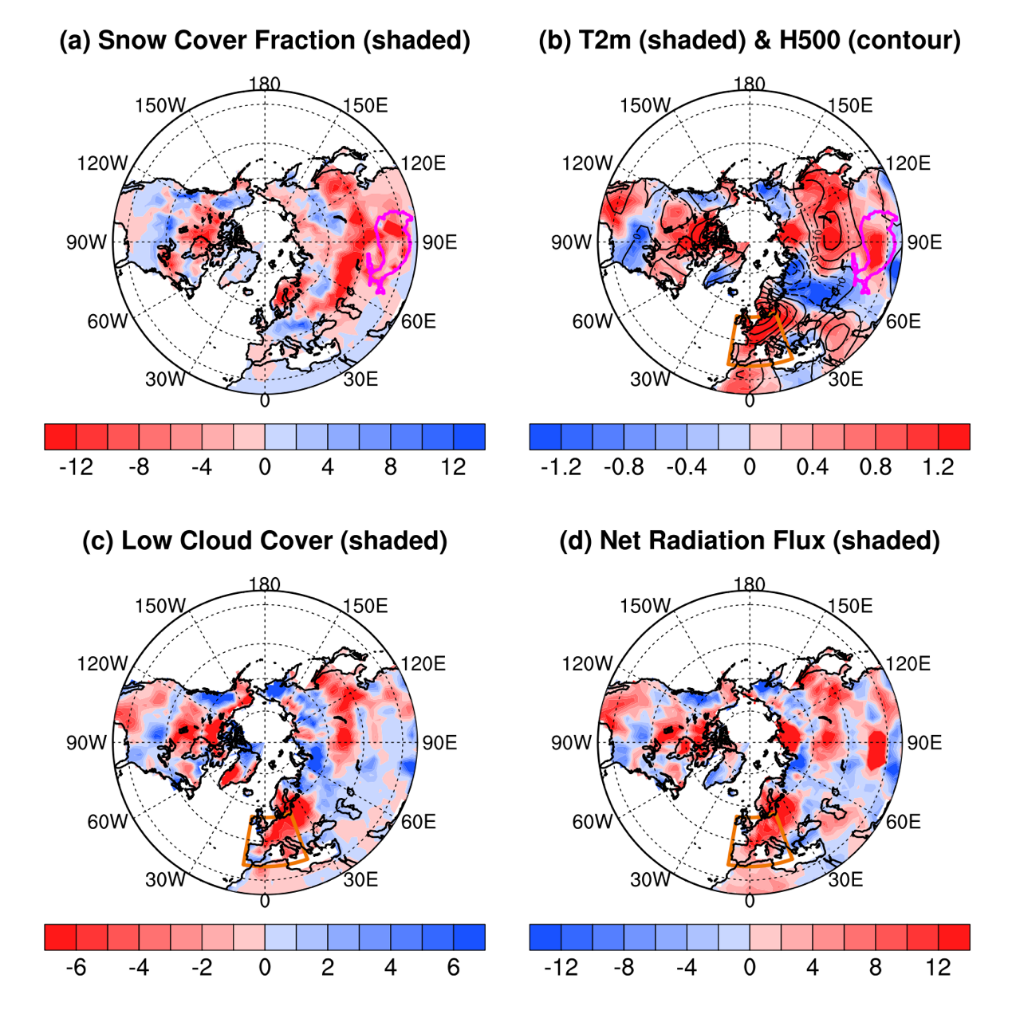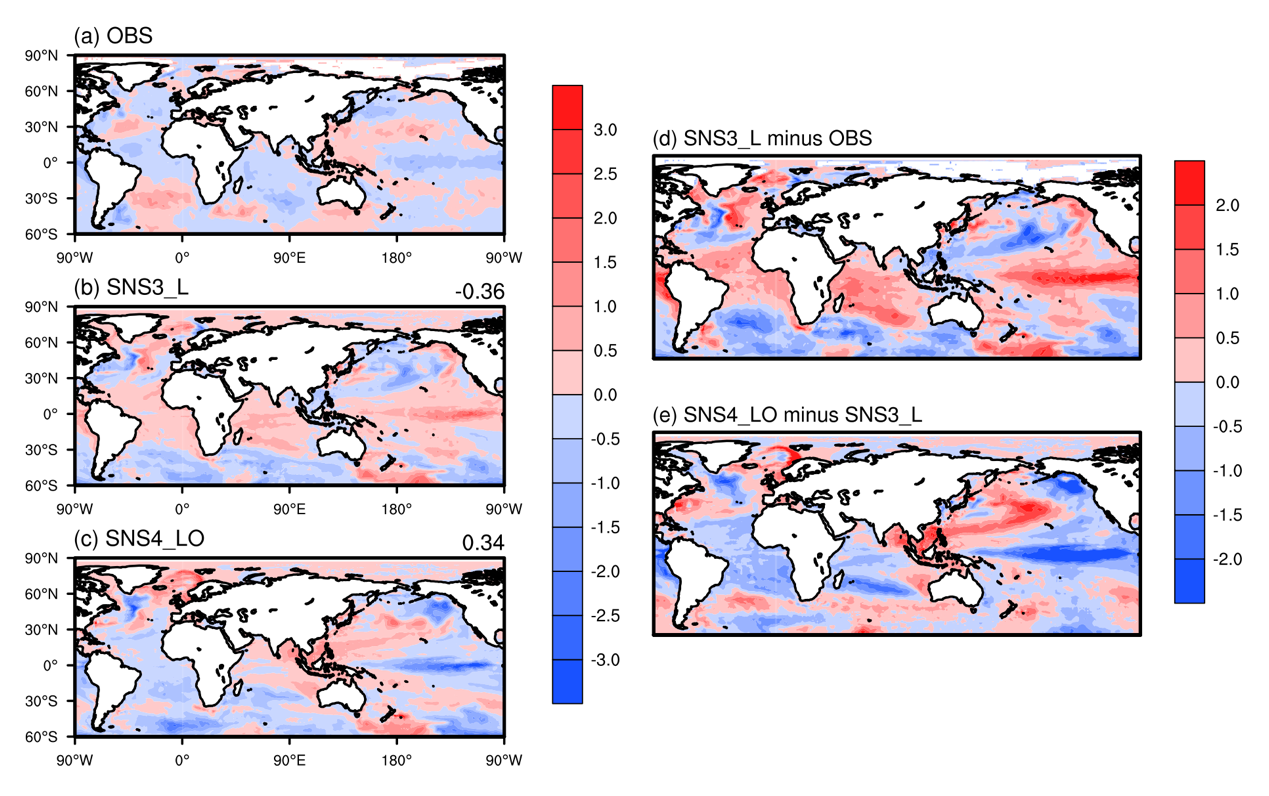Frequent extreme weather events occurring across the globe in recent years have exerted substantial impacts on both society and the economy. Notably, the European summer heatwave of 2003 stands as a quintessential example of such extreme phenomena. As one of the pivotal regulatory regions for the global climate, the Tibetan Plateau (TP) is recognized as the "Third Pole" owing to its geographical locale and distinctive climatic attributes. Despite existing research elucidating the significant role of the TP in global weather and climate systems, its full potential in subseasonal-to-interannual predictions remains untapped.
Addressing these issues, our research team has employed a newly developed land surface-coupled data assimilation system to integrate observational data from the TP into a coupled climate model. This integration significantly enhanced our interannual prediction capabilities for the European summer heatwave of 2003, thereby uncovering the crucial influence of the TP on the interannual predictability of this event. The research results have been published in NPJ Climate & Atmospheric Science in the form of a paper titled “Uncovering the interannual predictability of the 2003 European summer heatwave linked to the Tibetan Plateau”.
The findings of this study demonstrate that the assimilation system is capable of replicating the extensive anomalous high temperatures and high-pressure systems observed across Europe in 2003 (Fig. 1). This system reveals how the land surface conditions of the TP influence extreme climate events in distant regions through atmospheric teleconnection mechanisms. Further analysis indicates that the reduction in snow cover on the TP during the spring of 2003 led to enhanced surface heating, which in turn excited specific Rossby wave trains. These wave trains propagated across the Eurasian continent, ultimately inducing a strong high-pressure system over Europe, which caused reduced cloud cover and increased surface radiation, thereby facilitating the occurrence of extreme high-temperature events (Fig. 2).
Moreover, the land surface variations on the TP exert a significant influence on the global oceanic state. The study reveals that the land surface conditions of the TP markedly alter the sea surface temperatures (SSTs) of the Atlantic and Pacific Oceans by modulating atmospheric circulation. By assimilating observational data from the TP, climate models can more precisely simulate temperature changes in these oceanic regions, thereby enhancing the predictability for extreme events (Fig. 3).
This research offers a novel perspective for global climate modeling and early prediction of extreme weather events, while also fostering in-depth investigations into the TP as a crucial component of the global climate system. The research team anticipates leveraging the unique climatic characteristics of the TP to further improve the predictability of global extreme weather events in the future, providing new scientific evidence for mitigating and adapting to climate change.
Shi Pengfei, a doctoral graduate from the Department of Earth System Science (DESS) at Tsinghua University and currently a postdoctoral researcher at the Pacific Northwest National Laboratory, USA, is the first author of this paper. Lu Hui, a professor from the Tsinghua DESS; Bin Wang, a researcher from the Institute of Atmospheric Physics, Chinese Academy of Sciences; and Ruby R. Leung, an academician at the Pacific Northwest National Laboratory, are the co-corresponding authors. Yang Kun, a professor from the Tsinghua DESS, and Chen Haishan, a professor from Nanjing University of Information Science and Technology, are co-authors of this paper. This research was supported by the Second Tibetan Plateau Scientific Expedition and Research (Grant No. 2019QZKK0206) and the National Natural Science Foundation of China (Grant No. 42230606).
Full-text link:
https://doi.org/10.1038/s41612-024-00782-3

Fig. 1 Anomalies of the June-August 2003 European heatwave event for (a) surface air temperature and 500-hPa geopotential height, (b) soil moisture and sensible heat flux, (c) net radiation flux at surface. OBS means observation. CTRL represents the unassimilated experiment, and HCAST represents the assimilated hindcast experiment on the TP.

Fig. 2 Connection between snow cover anomalies on the TP in the spring of 2003 and temperature of Europe in summer, showing differences between SNS2_ALO and SNS1_AO of (a) snow cover fraction in spring 2003, (b) surface air temperature and 500-hPa geopotential height, (c) low cloud cover, and (d) net radiation flux in the summer of 2003.

Fig. 3 Sea surface temperature (SST) anomalies in January 2001 for (a) OBS, (b) SNS3_L, and (c) SNS4_LO, and the differences between SNS3_L and OBS (d). The Pearson Correlation Coefficient (PCC) of the spatial pattern between observed and SST anomalies in SNS3_L and SNS4_LO over global ocean are given at the top right corner for (b) and (c).
Written by Shi Pengfei and Lu Hui
Edited by Wang Jiayin
Reviewed by Zhang Qiang